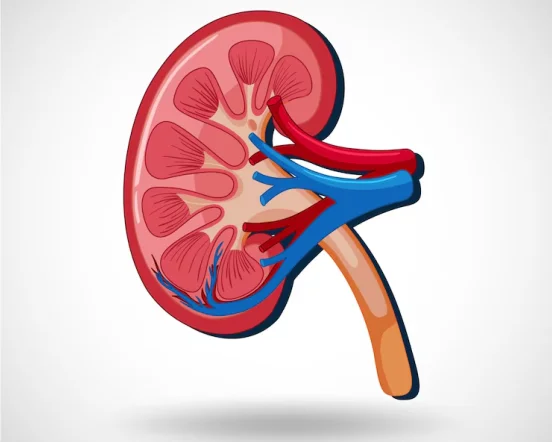Our hands are some of the most complex and vital tools of the human body. From gripping a pen to performing intricate tasks, the functionality of the hand is central to daily life. When injury, disease, or a deformity affects the hands, it can severely impact one’s independence and quality of life. That’s where hand surgery becomes a critical intervention.
So, What is Hand Surgery, In simple terms, hand surgery is a specialized field of surgery that deals with diseases, injuries, and deformities affecting the hand, wrist, forearm, and sometimes even the elbow. The goal of hand surgery is to restore function, reduce pain, and improve the appearance of the hand—often enabling patients to regain their normal daily activities.
What is Hand Surgery?
Hand surgery is a subspecialty that blends aspects of orthopedics, plastic surgery, and microsurgery. The human hand is made up of 27 bones, intricate joints, tendons, muscles, nerves, and blood vessels, all working together to perform complex movements. Because of this complexity, any damage—even minor—can result in significant dysfunction.
Hand surgeons are often orthopedic or plastic surgeons who receive additional fellowship training in conditions specifically related to the upper extremities. These specialists are trained to handle both surgical and non-surgical treatment of hand conditions.
Why Is Hand Surgery Performed?
Hand surgery is typically recommended when:
- An injury impairs the use or function of the hand
- Pain interferes with daily activities
- Conservative treatment methods (like physiotherapy, medication, or splints) fail
- There is an ongoing deformity or abnormality
- There is a risk of long-term disability if untreated
Conditions treated through hand surgery include fractures, nerve injuries, tendon injuries, arthritis, carpal tunnel syndrome, congenital defects, ganglion cysts, and more.
Common Conditions That May Require Hand Surgery
Traumatic Injuries :- These include fractures, dislocations, tendon lacerations, ligament injuries, and nerve damage. Surgery may be required to:
- Realign fractured bones
- Repair torn tendons or ligaments
- Reconnect severed nerves
- Treat open wounds and prevent infection
Carpal Tunnel Syndrome :- This condition is caused by pressure on the median nerve as it passes through the carpal tunnel in the wrist. Symptoms include pain, numbness, and tingling in the hand. Surgery involves releasing the tight ligament to relieve nerve pressure.
Trigger Finger :- In this condition, a finger gets stuck in a bent position and then suddenly snaps straight. Surgery may be needed to release the tendon sheath, allowing smooth finger movement.
Arthritis of the Hand :- Both osteoarthritis and rheumatoid arthritis can affect the hand joints. Surgical options may include:
- Joint fusion (arthrodesis)
- Joint replacement (arthroplasty)
- Tendon reconstruction
Dupuytren’s Contracture :- A condition where thickened tissue in the palm causes fingers to curl inward. Surgery involves removing or breaking the cords of tissue to restore finger extension.
Congenital Hand Differences :- Children may be born with conditions like extra fingers (polydactyly), webbed fingers (syndactyly), or underdeveloped hands. Surgery corrects these deformities to improve appearance and function.
Tumors, Cysts, and Infections :- Benign growths like ganglion cysts or malignant tumors may need surgical removal. Infections, if not treated early, can damage tendons and joints and may require debridement or drainage.
Types of Hand Surgery Procedures
Tendon Repair :- Tendons can rupture due to injury or inflammation. Surgery involves stitching the torn tendon ends together or grafting new tendon tissue.
Nerve Repair :- Nerve injuries may lead to loss of sensation or muscle function. Microsurgical techniques are used to repair or graft nerves.
Joint Replacement (Arthroplasty) :- In cases of severe arthritis, a damaged joint may be replaced with an artificial one, especially in the fingers or wrist.
Fracture Fixation :- Broken bones in the hand may require surgical realignment and stabilization using plates, screws, or pins.
Skin Grafting and Flaps :- For severe injuries or burns, skin from another part of the body may be used to cover wounds or reconstruct areas of lost tissue.
Replantation :- In cases of accidental finger or hand amputation, microsurgery may allow reattachment (replantation) of the lost part.
Endoscopic Surgery :- Minimally invasive procedures like endoscopic carpal tunnel release are performed using a tiny camera and instruments through small incisions, resulting in less pain and faster recovery.
What to Expect Before the Surgery
Patients undergo a detailed evaluation that includes:
- Physical examination
- X-rays, MRIs, or nerve conduction studies
- Review of medical history
- Discussion about the nature of the problem and possible treatment options
The decision to proceed with surgery is made only when conservative measures are insufficient or when there’s structural damage that cannot heal on its own.
Recovery and Rehabilitation After Hand Surgery
Recovery after hand surgery varies depending on the procedure and the patient’s condition. Some key points include:
- Pain Management :- Mild to moderate discomfort is expected post-surgery. Pain medications are prescribed to manage this.
- Immobilization :- Splints or casts may be used to protect the surgical site during initial healing.
- Physical Therapy :- Early and structured hand therapy is critical for regaining motion, strength, and function.
- Follow-up Visits :- Regular visits help the surgeon monitor healing and remove sutures if needed.
Recovery time may range from a few weeks to several months. Complex surgeries like tendon or nerve repair may require prolonged rehabilitation.
Risks and Complications of Hand Surgery
While generally safe, hand surgery does carry potential risks, such as:
- Infection
- Scarring
- Stiffness or limited range of motion
- Nerve damage or numbness
- Blood clots or poor circulation
- Failure of the surgery to fully restore function
Choosing an experienced hand surgeon and following post-operative care guidelines help minimize these risks.
Who Performs Hand Surgery?
Hand surgeons are orthopedic, plastic, or general surgeons who have undergone additional training in treating hand and upper extremity conditions. Many are also board-certified and affiliated with organizations like the American Society for Surgery of the Hand (ASSH) or its international equivalents.
These specialists often work closely with hand therapists, occupational therapists, and physiotherapists to provide a comprehensive treatment plan.
Conclusion
Hand surgery is a highly specialized field that plays a critical role in restoring the form and function of the hand after injury, disease, or deformity. Whether it’s a traumatic fracture, persistent nerve compression, or a congenital anomaly, surgical intervention can provide relief from pain, improve hand function, and enhance quality of life.
If you or someone you know is struggling with hand-related symptoms such as numbness, deformity, restricted movement, or persistent pain that doesn’t improve with conservative treatment, it may be time to consult a hand surgeon. Early diagnosis and timely intervention can prevent long-term complications and help you regain the ability to perform everyday tasks comfortably and confidently.























